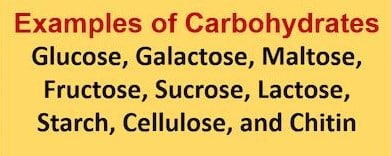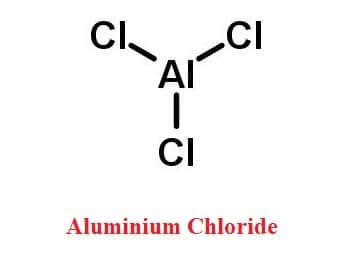Carbohydrates – fibre, starches, and sugars — are vital diet elements that our body transforms into glucose to give us the energy to perform. Examples of carbohydrates are Glucose, Galactose, Maltose, Fructose, Sucrose, Lactose, Starch, Cellulose, and Chitin.

- Many fruits contain simple sugars in the form of fructose.
- All dairy products contain galactose.
- Lactose can be found in large quantities in milk and other dairy products.
- Maltose can be found in a variety of foods, including cereal, beer, potatoes, processed cheese, and pasta.
- Sucrose is derived from sugar and honey, both of which include trace amounts of vitamins and minerals.
Table of Contents
What are carbohydrates?
Carbohydrates are named for the chemical elements carbon, hydrogen, and oxygen that they contain.
They are comprised of sugars, fibres, and starches, which are necessary nutrients.
They can be found in cereals, vegetables, fruits, and dairy products such as milk and cheese.
Carbohydrate-rich foods are transformed into glucose or blood sugar by the digestive system throughout the digestion process. The cells, organs, and tissues of our body use this sugar as a source of energy.
The additional energy or sugar is stored in our muscles and liver in case we need it again.
The term “carbohydrate” comes from the French term “hydrate de carbon,” which means “carbon hydrate.”
Bread, beans, milk, popcorn, potatoes, cookies, spaghetti, soft drinks, corn, and cherry pie are just a few examples of carbohydrate-rich foods. They also come in a range of shapes and sizes. Sugars, fibres, and starches are the most common and abundant types.
Examples of Carbohydrates
The main examples of carbohydrates are Glucose, Galactose, Maltose, Fructose, Sucrose, Lactose, Starch, Cellulose, and Chitin. Sources of them are listed below:
Sources of Glucose
Glucose (C6H12O6) can be found in a variety of foods, including bread, fruits, vegetables, and dairy products. Our bodies require food to produce the energy that keeps us alive. In the form of carbs, glucose is one of the body’s preferred fuel sources. Although glucose is necessary, it should be used in moderation. Unhealthy glucose levels can have long-term and catastrophic health consequences.
Sources of Maltose
Maltose is found in a variety of foods like wheat, cornmeal, barley, and some ancient grains contain it.
Malted grains are also used in many morning portions of cereal to enhance natural sweetness.
Fruits, particularly peaches and pears, are another common source of maltose in the diet.
Sources of Galactose
Dairy products, avocados, sugar beets, and various gums and mucilages all contain galactose. It is also produced by the body, where it is found in glycolipids and glycoproteins in a variety of tissues; and it is a by-product of the third-generation ethanol manufacturing process (from macroalgae).
Sources of Fructose
Fructose, also known as “fruit sugar,” is a monosaccharide similar to glucose.
Fruit, honey, agave, and most root vegetables contain it naturally.
Furthermore, it’s typically found in processed goods such as high-fructose corn syrup. Sugar cane, sugar beets, and corn are all sources of fructose.
Sources of Sucrose
Sugarcane, sugar beets, sugar maple sap, dates, and honey all contain sucrose. It’s made in vast quantities economically (mostly from sugarcane and sugar beets) and is nearly entirely consumed as food.
Sources of Lactose
Lactose can be found in cow’s milk, goat’s milk, yogurt, cheese, and ice cream, among other dairy products. Bread, cereal, lunchmeats, salad dressings, and baking mixes are all examples of foods and beverages that contain it.
Sources of Starch
Starch is a polysaccharide that releases glucose when it is hydrolyzed. Cereals (rice, wheat, maida, sago, maize, and barley), roots (cassava, tapioca, arrowroot), and tubers provide the majority of the starches and starchy foods utilized in food preparation (potatoes, sweet potatoes).
Sources of Cellulose
Bran, legumes, almonds, peas, roots, cabbage, and apple skins all contain considerable levels of cellulose. Bran, nuts, legumes, and whole grains all contain hemicellulose.
Important Links
Body’s Preferred Source Of Energy
Keto Diet| Zero Carb Popular Food
Raspberries| Health Benefits
Fig Fruit| Health Benefits| Dried Figs
Frequently Asked Questions (FAQs)
1. What is glucose made of?
6 carbon atoms, 12 hydrogen atoms, and 6 oxygen atoms make up glucose. Dextrose is another name for it. It is produced in the liver and kidneys of animals spontaneously. It can be present in plants’ fruits as well as other sections of the plant. D-glucose is the most common kind of glucose found in nature.
2. What Is Diabetes?
Diabetes is a long-term condition caused by the pancreas malfunctioning.
Insulin is a hormone produced b1y the pancreas that serves as a key to allowing glucose to be converted into energy.
In the blood, all carbohydrate foods are broken down into glucose. Insulin aids glucose absorption into cells.
When the body is unable to make or utilize insulin properly, glucose levels in the blood rise.
3. Does the Keto diet contains glucose?
The ketogenic diet’s main purpose is to burn fat for energy instead of carbohydrates or glucose. On the keto diet, you eat a low-carbohydrate diet with extremely little fat.
More Links
- BCl3 Lewis Structure in four simple steps - November 1, 2023
- PH3 Lewis Structure in four simple steps - October 8, 2023
- PF3 Lewis structure in four simple steps - September 24, 2023



